THIS May we are once again celebrating the genius that is C.B. Mayshark! Mayshark took over the covers duties on Flying Aces from Paul Bissell with the December 1934 issue and would continue to provide covers for the next year and a half until the June 1936 issue. While Bissell’s covers were frequently depictions of great moments in combat aviation from the Great War, Mayshark’s covers were often depictions of future aviation battles and planes, or sometimes even Zeppelins like the June 1936’s cover which imagines what the new Zeppelin heading to America might look like!
The New Zeppelin Heads for America!
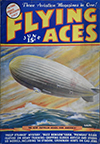 OF COURSE we’re aware of the fact that when we discuss lighter-than-air craft we are touching on a subject that has unpleasant memories for most Americans. The Shenandoah, Akron, and Macon disasters have left in their wake a subconscious dread of Zeppelins. But perhaps we are unduly biased in our opinion as to the merits of the cigar shaped balloons that go scuttling across the sky in such a graceful manner.
OF COURSE we’re aware of the fact that when we discuss lighter-than-air craft we are touching on a subject that has unpleasant memories for most Americans. The Shenandoah, Akron, and Macon disasters have left in their wake a subconscious dread of Zeppelins. But perhaps we are unduly biased in our opinion as to the merits of the cigar shaped balloons that go scuttling across the sky in such a graceful manner.
But let us forget, for a moment, our own misfortunes. Across the blue Atlantic there is a nation of people who know how to build Zeppelins as they should be built. Germany has been building them for years with great success. Indeed, a German—Count Zeppelin—gave the world these giant ships.
During the War, the Zeppelin came into prominence as a military weapon (see article on the raiding Zeppelins in your April FLYING ACES). True, these Wartime gas bags were tricky and on several occasions became veritable death traps, but in spite of these misfortunes they continued in popularity until finally they were out of the experimental stage.
Then the British and Americans recognized their value. But, like us, the British also had their difficulties and crash followed crash until finally, with the destruction of the giant R-101 and its huge death toll, the English washed their hands of the business altogether.
With our several disasters, we Americans seem to be in the same boat as the British, although not officially. And so dubious glances are cast across the Big Pond as America awaits the take-off of the new Von Hindenburg (LZ-129) for Lakehurst.
According to present schedules, the new queen of the skies is to make its initial voyage to the United States early in May. The route to be followed is the northern, or Great Circle, route and the western terminus, as just noted, will be the United States Naval air station at Lakehurst, New Jersey. The hangars at Lakehurst are the only ones on the Eastern seaboard large enough to accommodate the new giant. They have been leased by the German operating company.
Of course the Germans, with their enthusiasm for lighter-than-air craft, are looking forward to a warm reception for the Von Hindenburg. They hope to establish a permanent North Atlantic passenger and mail air service, and they point out the obvious when they say it shouldn’t be done with a single ship.
Their idea is for the Americans to become convinced of the advisability of employing several Zeppelins for over water transportation and so join hands with them in completing establishment of the route. If America shows any signs of a willingness to cooperate and builds another ship, Germany plans to continue the service that is to be inaugurated this summer. If not, the new Von Hindenburg may join her sister, the Graf Zeppelin, on the South Atlantic run.
The great success that has attended the many flights of the famous Graf leads us to believe that the Zeppelin may be coming into its own. There is no reason in the world why the Von Hindenburg should not have the same success. What faults the Graf has have been eliminated’ in the new ship, and more modern construction has also been incorporated. Besides their ability to build these monsters, the Germans have an uncanny faculty for flying the cigar-shaped craft. Their inherent love for thoroughness is well applied in this respect.
One question that naturally arises in conjunction with a passenger and mail Zeppelin air service is: Does it pay? Our immediate answer is that it doesn’t. Obviously, a government subsidy is necessary. However, there is an intangible something derived that cannot be measured in dollars and cents. The good will and friendly relations which the Graf has produced in the South American countries for Germany has many times made up for the subsidy the German government has placed upon the company operating the veteran Zep.
The new markets that Germany has found and the subsequent increased trade have combined to make the idea of travel by Zeppelin a sort of national institution in Germany, and rightfully so.
The airship has often been criticized for its slow speed in comparison with heavier-than-air craft, as well as for its high cost, both initial and operating. But most of the hollering has come from the direction of the airplane groups which refuse to recognize the obvious great value which is possessed by the Graf.
THE passenger facilities and fittings for the Von Hindenburg are ultra modern. The passengers are accommodated in the hull itself. In this way, roominess is assured. There are two passenger .decks, “A” and “B.” “A” deck contains twenty-five staterooms each with two berths. Also on “A” deck are the dining saloon and reading and writing rooms. On “B” deck below are the shower baths, smoking room, and bar. The two decks, of course, have access to each other and provide a walk two hundred feet in length.
The Von Hindenburg has a cruising speed of eighty miles per hour. Her range is nearly nine thousand miles. It is expected that the Atlantic crossings will be made in sixty-five hours or less.
The new ship boasts almost twice the gas capacity of the Graf, but still it’s only forty feet longer. Against the Graf’s 3,700,000 cubic feet of lift gas space, the Von Hindenburg has a capacity for 7,000,000 cubic feet. An idea of the new craft’s greater bulk can be obtained from these figures.
Four Mercedes-Benz Diesel engines, each developing 1,200 h.p., drive this latest Zeppelin. Greater safety is derived from the employment of Diesel, instead of gasoline, engines, since the absence of gasoline and electric spark combustion reduces the fire hazard. Because of this absence of gasoline, passengers will be allowed the privilege of a smoking room.
And so we await the arrival of the great Von Hindenburg. In the meantime, anti-airship criticism should be taken with a grain of salt, for we know that this ship was built by people who know their business from the ground up and who have in the past demonstrated their natural facility for Zeppelin construction. We of FLYING ACES take this opportunity to wish the Von Hindenburg a long and successful life.

The New Zeppelin Heads for America!: Thrilling Story Behind This Month’s Cover
Flying Aces, June 1936 by C.B. Mayshark
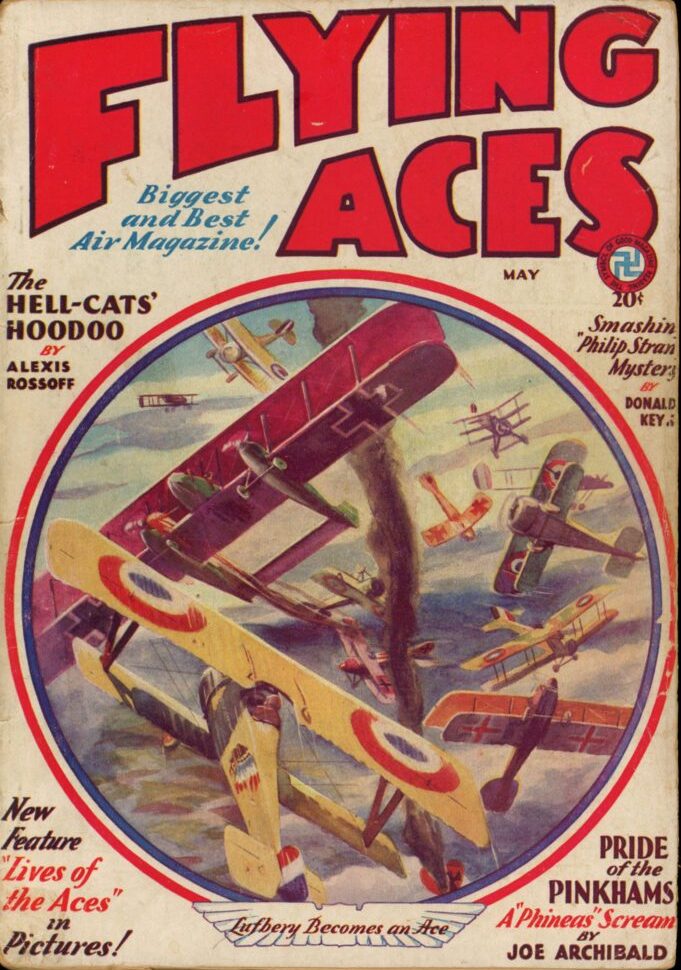 That sound can only mean one thing—that Bachelor of Artifice, Knight of Calamity and an alumnus of Doctor Merlin’s Camelot College for Conjurors is back to vex not only the Germans, but the Americans—the Ninth Pursuit Squadron in particular—as well. Yes it’s the marvel from Boonetown, Iowa himself—Lieutenant Phineas Pinkham!
That sound can only mean one thing—that Bachelor of Artifice, Knight of Calamity and an alumnus of Doctor Merlin’s Camelot College for Conjurors is back to vex not only the Germans, but the Americans—the Ninth Pursuit Squadron in particular—as well. Yes it’s the marvel from Boonetown, Iowa himself—Lieutenant Phineas Pinkham! 





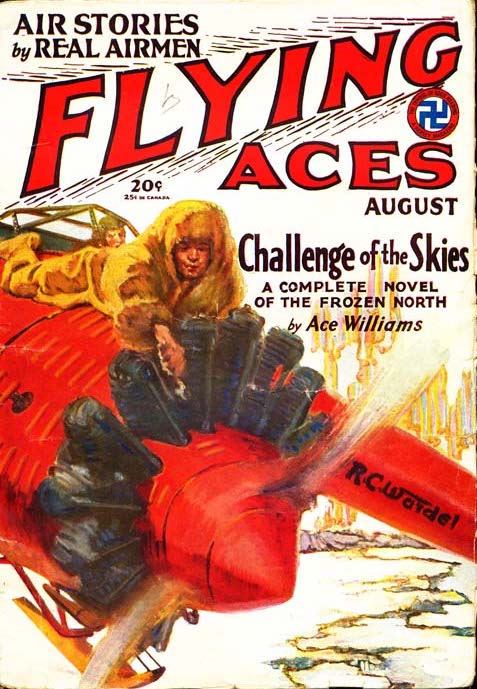 a story by J.D. Rogers, Jr. Rogers is credited with roughly fourteen tales from the pages of Flying Aces, Sky Birds and Sky Aces. “The Yellow Ace” from the August 1929 Flying Aces was his first published tale. In it James Lawrence arrives on the tarmac of the 23rd Squadron R.F.C. with his newly designed fighter plane. In the make-up of this plane was the knowledge and experience of a young man who had played and worked in his father’s aeroplane factory since age permitted. Prompted by zealous patriotic duty he had built this super fighter for his country, a country which the warring nations had far surpassed in the art of building aircraft. Refused a fair demonstration of his plane by a very inexperienced air board, the youth, with his flame of patriotism quenched, turned from his own country to England whose air board was frantic for a plane fast enough and maneuverable enough to successfully combat the German demons who had held the air supremacy through the war.
a story by J.D. Rogers, Jr. Rogers is credited with roughly fourteen tales from the pages of Flying Aces, Sky Birds and Sky Aces. “The Yellow Ace” from the August 1929 Flying Aces was his first published tale. In it James Lawrence arrives on the tarmac of the 23rd Squadron R.F.C. with his newly designed fighter plane. In the make-up of this plane was the knowledge and experience of a young man who had played and worked in his father’s aeroplane factory since age permitted. Prompted by zealous patriotic duty he had built this super fighter for his country, a country which the warring nations had far surpassed in the art of building aircraft. Refused a fair demonstration of his plane by a very inexperienced air board, the youth, with his flame of patriotism quenched, turned from his own country to England whose air board was frantic for a plane fast enough and maneuverable enough to successfully combat the German demons who had held the air supremacy through the war.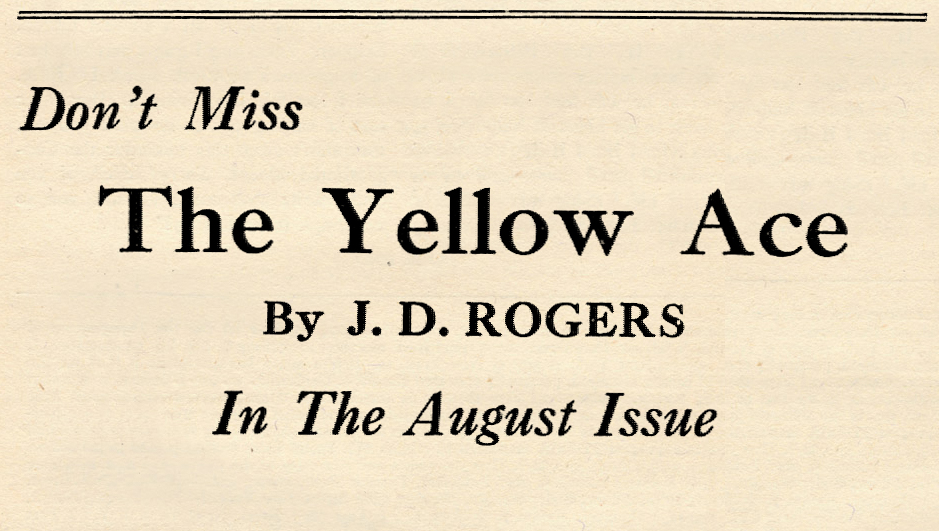
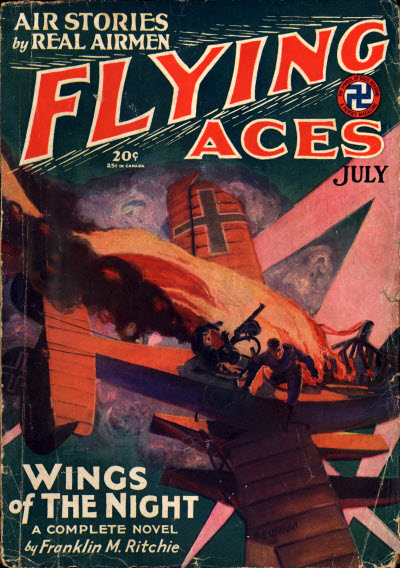 another story by Alfred Hall Stark. Stark wrote a dozen or so stories for the pulps, frequently dealing with aviation, in the late twenties and early thirties before building a reputation for writing well-researched, fact-based articles for The Reader’s Digest, Popular Science, Saturday Evening Post and others.
another story by Alfred Hall Stark. Stark wrote a dozen or so stories for the pulps, frequently dealing with aviation, in the late twenties and early thirties before building a reputation for writing well-researched, fact-based articles for The Reader’s Digest, Popular Science, Saturday Evening Post and others.
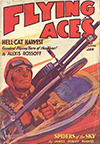
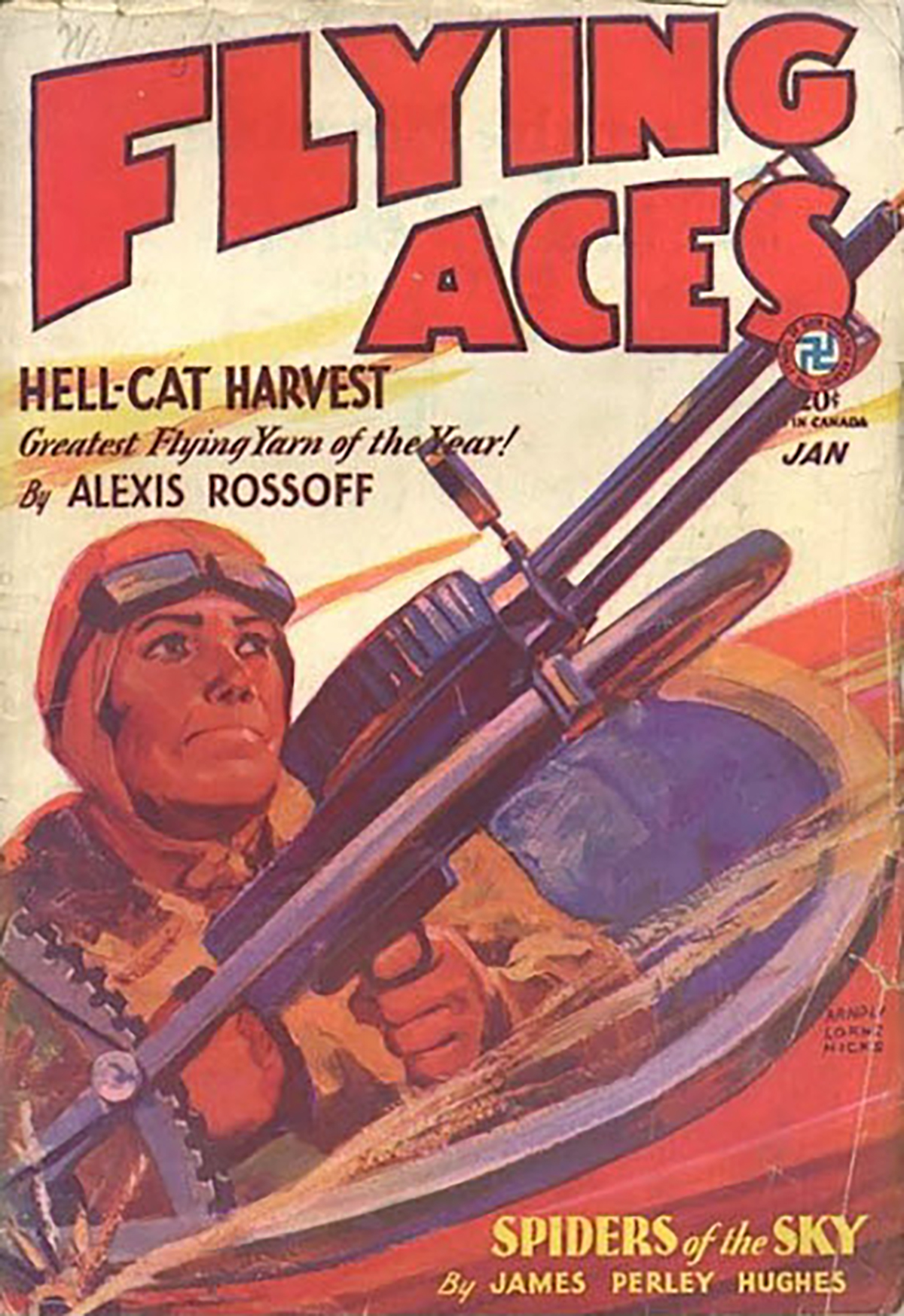
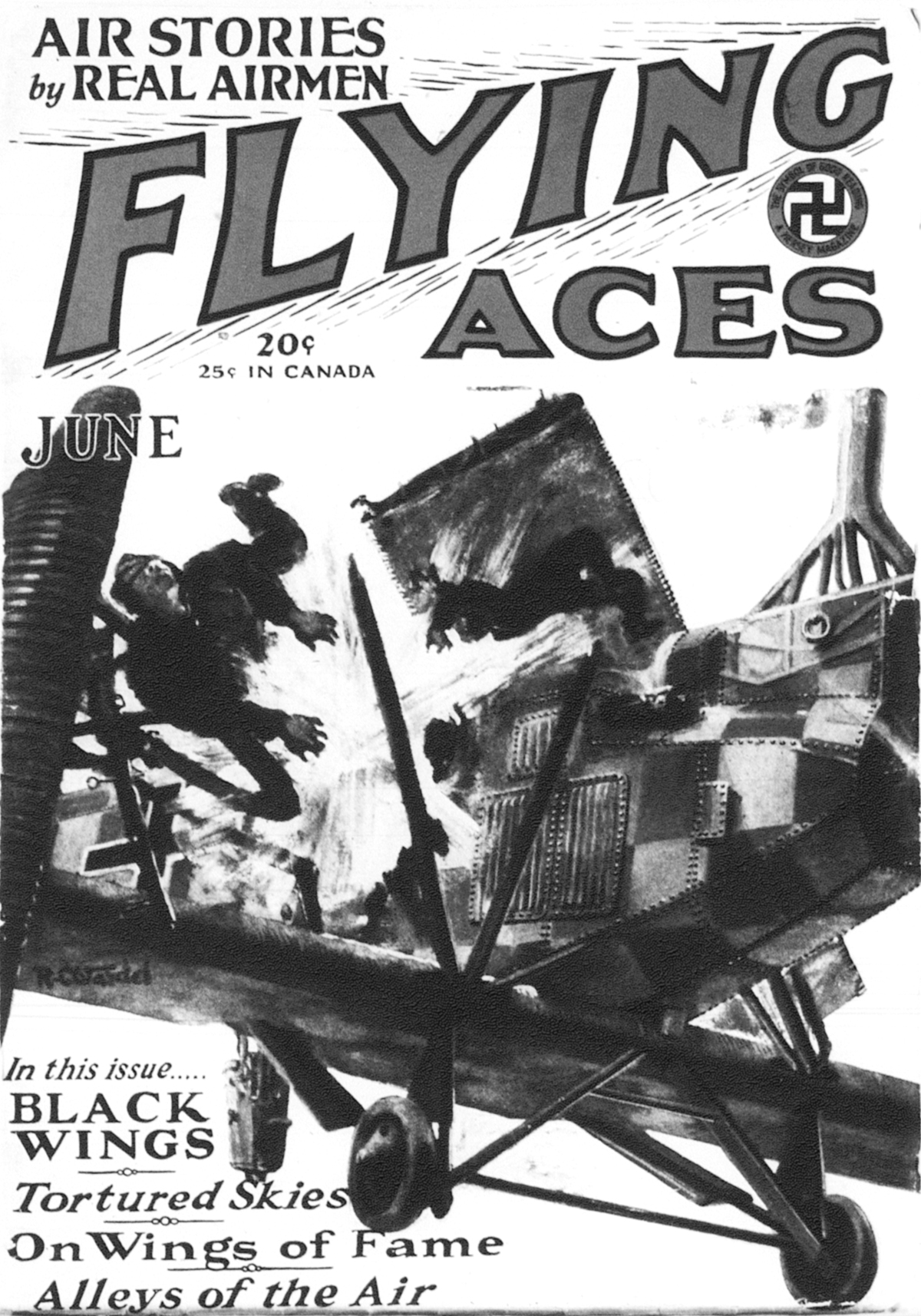 a story by Alfred Hall Stark. Stark wrote a dozen or so stories for the pulps, frequently dealing with aviation, in the late twenties and early thirties. Stark was a pseudonym for Afred Halle Sinks. Sinks was a native of Ohio, who won his reportorial spurs in New York before heading to Porto Rico to work on the Porto Rico Progress published in San Juan. When sinks returned to the US, he was a staff writer for Popular Science and The Reader’s Digest building a reputation for writing well-researched, fact-based articles for those publications as well as others and newspapers.
a story by Alfred Hall Stark. Stark wrote a dozen or so stories for the pulps, frequently dealing with aviation, in the late twenties and early thirties. Stark was a pseudonym for Afred Halle Sinks. Sinks was a native of Ohio, who won his reportorial spurs in New York before heading to Porto Rico to work on the Porto Rico Progress published in San Juan. When sinks returned to the US, he was a staff writer for Popular Science and The Reader’s Digest building a reputation for writing well-researched, fact-based articles for those publications as well as others and newspapers.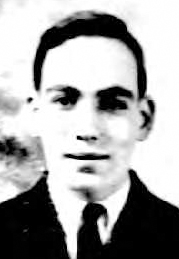 In a brief biographical paragraph from an article in 1963, Alfred Halle Sinks was said to be living in Philadelphia and responsible for the public information program that launched Bucks County’s open space conservation program. By that time he had been editor of the Bucks County Traveler, as well as a staff writer for Popular Science and Reader’s Digest, and had contributed articles to the Saturday Evening Post, Collier’s, Ladies Home Journal, and other leading national magazines.
In a brief biographical paragraph from an article in 1963, Alfred Halle Sinks was said to be living in Philadelphia and responsible for the public information program that launched Bucks County’s open space conservation program. By that time he had been editor of the Bucks County Traveler, as well as a staff writer for Popular Science and Reader’s Digest, and had contributed articles to the Saturday Evening Post, Collier’s, Ladies Home Journal, and other leading national magazines.
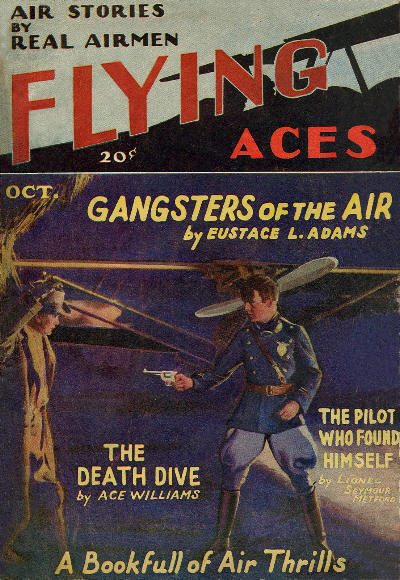 another story from one of the new flight of authors on the site this year—Andrew A. Caffrey. Caffrey, who was in the American Air Service in France during The Great War and worked for the air mail service upon his return, was a prolific author of aviation and adventure stories for both the pulps and slicks from the 1920’s through 1950. Here Caffrey tells the tale of a group of service men filling out the last months of their service stateside after the end of the war before being discharged. From the very first issue of Flying Aces October 1928 it’s Andrew A. Caffrey’s “A Fine Man—The Colonel!”
another story from one of the new flight of authors on the site this year—Andrew A. Caffrey. Caffrey, who was in the American Air Service in France during The Great War and worked for the air mail service upon his return, was a prolific author of aviation and adventure stories for both the pulps and slicks from the 1920’s through 1950. Here Caffrey tells the tale of a group of service men filling out the last months of their service stateside after the end of the war before being discharged. From the very first issue of Flying Aces October 1928 it’s Andrew A. Caffrey’s “A Fine Man—The Colonel!”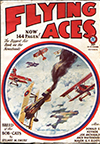

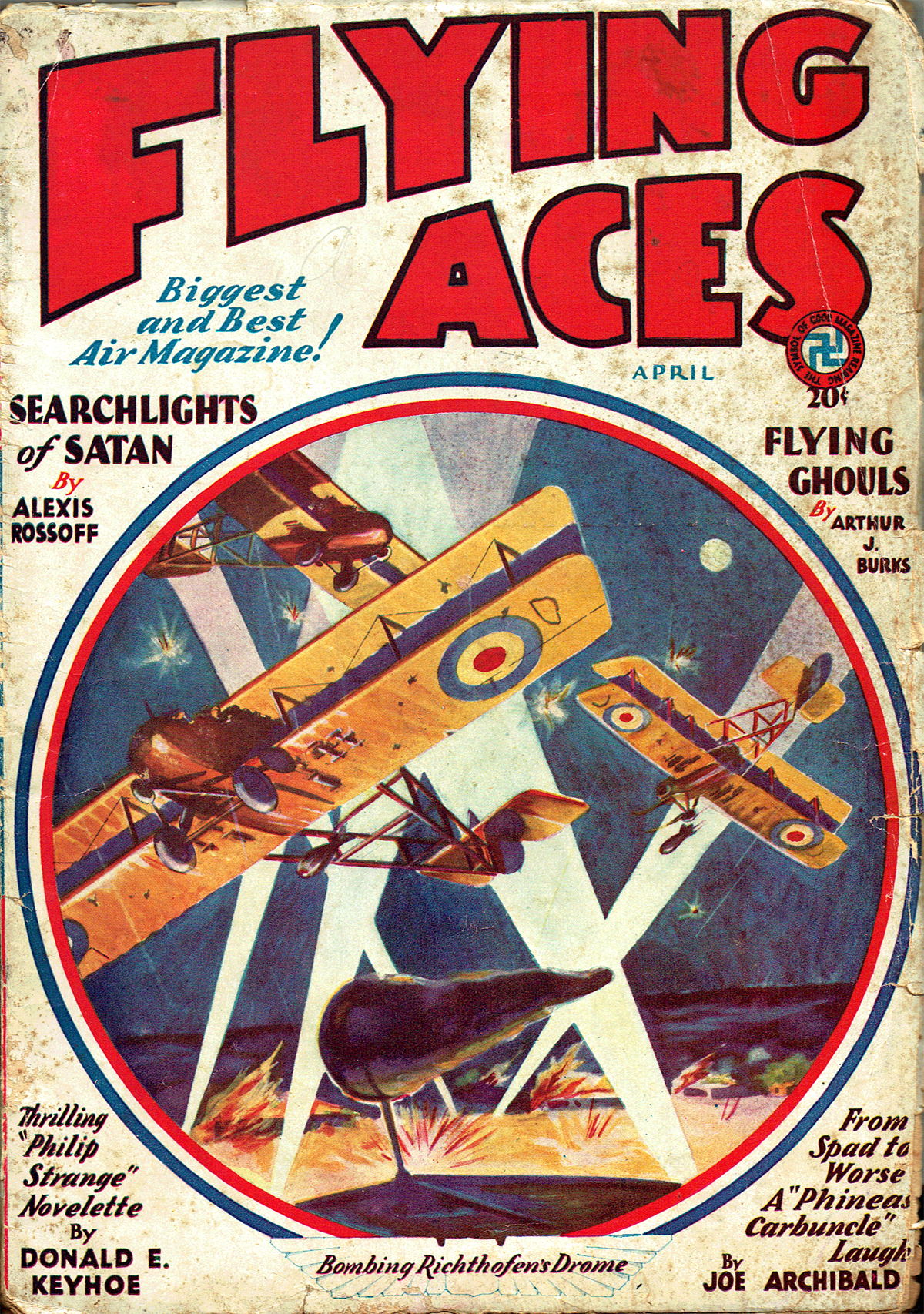 That sound can only mean one thing—that Bachelor of Artifice, Knight of Calamity and an alumnus of Doctor Merlin’s Camelot College for Conjurors is back to vex not only the Germans, but the Americans—the Ninth Pursuit Squadron in particular—as well. Yes it’s the marvel from Boonetown, Iowa himself—Lieutenant Phineas Pinkham!
That sound can only mean one thing—that Bachelor of Artifice, Knight of Calamity and an alumnus of Doctor Merlin’s Camelot College for Conjurors is back to vex not only the Germans, but the Americans—the Ninth Pursuit Squadron in particular—as well. Yes it’s the marvel from Boonetown, Iowa himself—Lieutenant Phineas Pinkham! 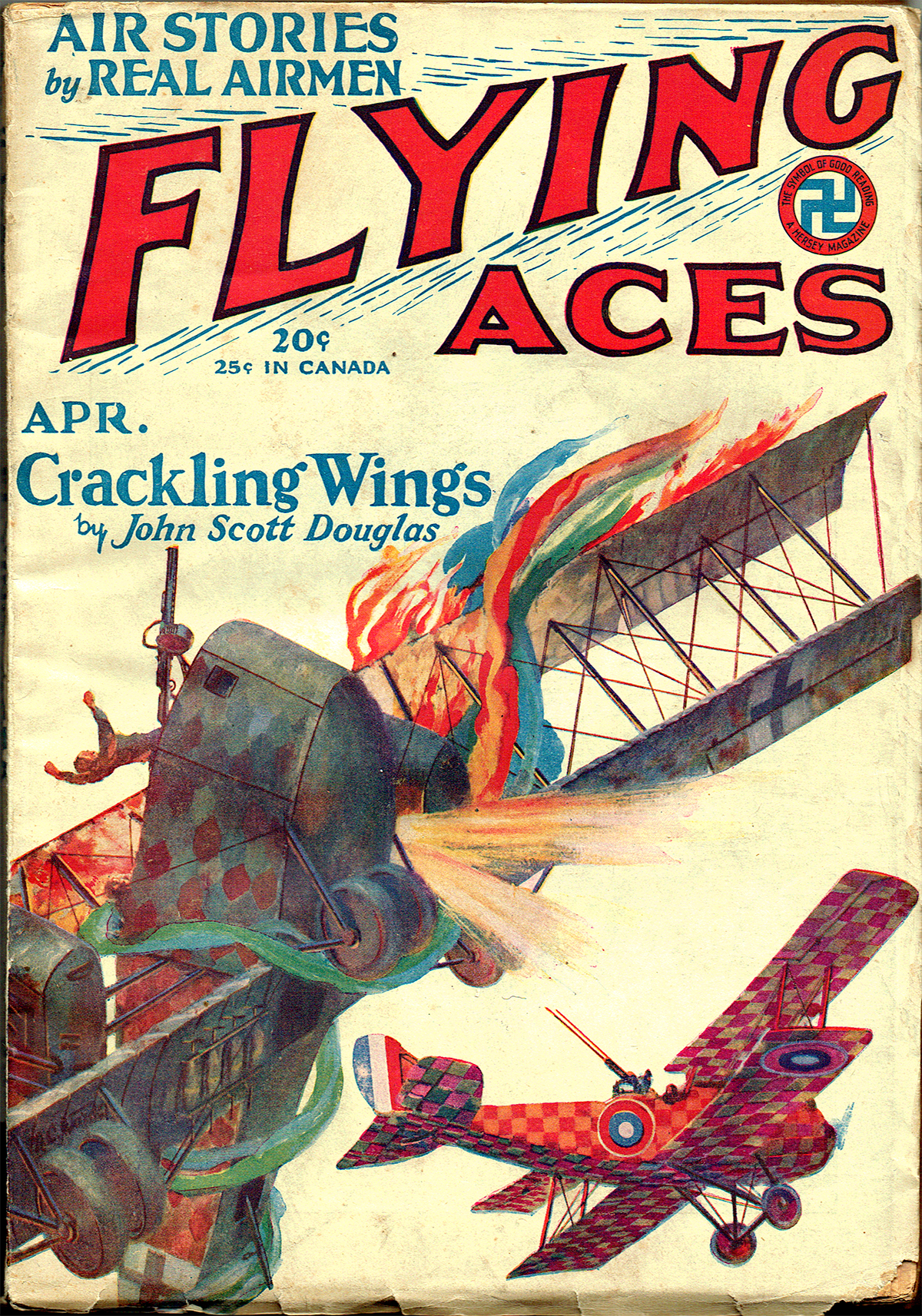 a story by Franklin M. Ritchie. Ritchie only wrote aviation yarns and his entire output—roughly three dozen stories—was between 1927 and 1930, but Ritchie was not your typical pulp author—he was a lawyer who wrote pulp stories on the side to satisfy his yen for flying.
a story by Franklin M. Ritchie. Ritchie only wrote aviation yarns and his entire output—roughly three dozen stories—was between 1927 and 1930, but Ritchie was not your typical pulp author—he was a lawyer who wrote pulp stories on the side to satisfy his yen for flying.
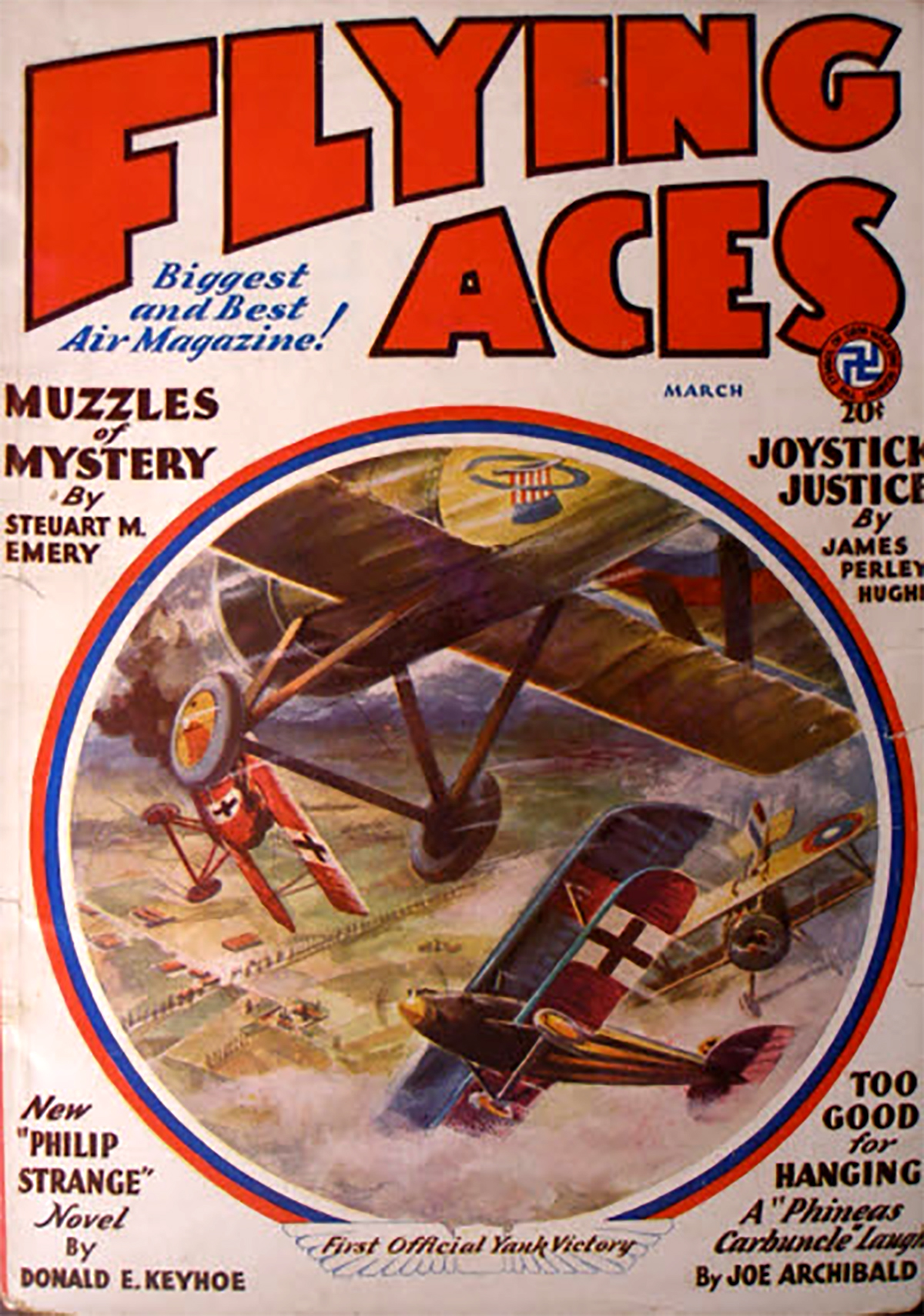 That sound can only mean one thing—that Bachelor of Artifice, Knight of Calamity and an alumnus of Doctor Merlin’s Camelot College for Conjurors is back to vex not only the Germans, but the Americans—the Ninth Pursuit Squadron in particular—as well. Yes it’s the marvel from Boonetown, Iowa himself—Lieutenant Phineas Pinkham!
That sound can only mean one thing—that Bachelor of Artifice, Knight of Calamity and an alumnus of Doctor Merlin’s Camelot College for Conjurors is back to vex not only the Germans, but the Americans—the Ninth Pursuit Squadron in particular—as well. Yes it’s the marvel from Boonetown, Iowa himself—Lieutenant Phineas Pinkham! 


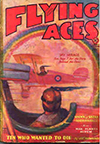

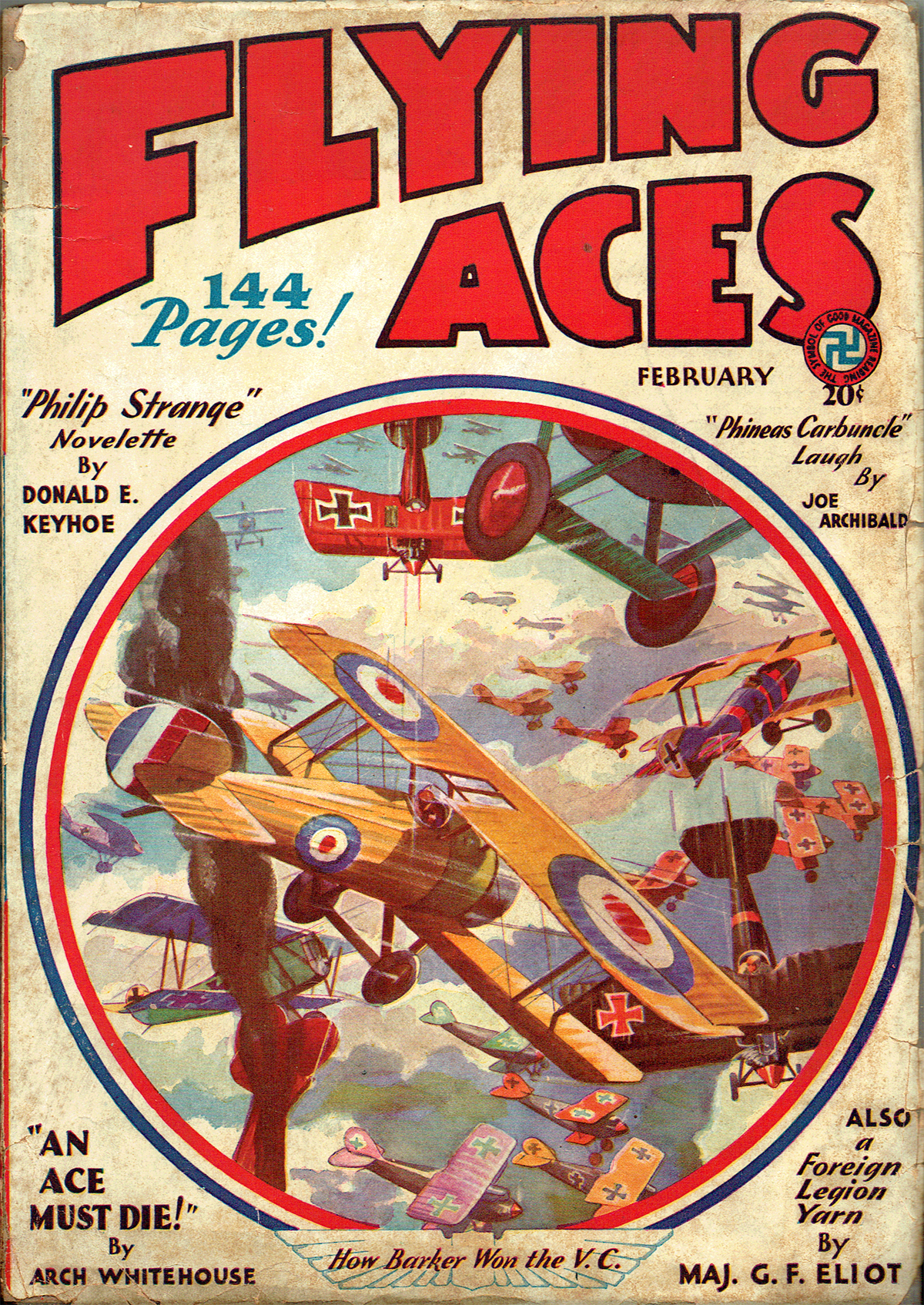 That sound can only mean one thing—that Bachelor of Artifice, Knight of Calamity and an alumnus of Doctor Merlin’s Camelot College for Conjurors is back to vex not only the Germans, but the Americans—the Ninth Pursuit Squadron in particular—as well. Yes it’s the marvel from Boonetown, Iowa himself—Lieutenant Phineas Pinkham!
That sound can only mean one thing—that Bachelor of Artifice, Knight of Calamity and an alumnus of Doctor Merlin’s Camelot College for Conjurors is back to vex not only the Germans, but the Americans—the Ninth Pursuit Squadron in particular—as well. Yes it’s the marvel from Boonetown, Iowa himself—Lieutenant Phineas Pinkham! 

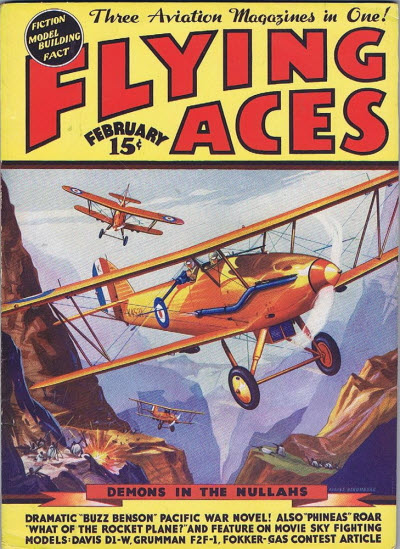 a story by Orlando Rigoni. Rigoni was a very prolific author of western and flying stories appearing in such magazines as Battle Birds, Dare-Devil Aces, Sky Birds, War Birds, Fighting Aces, Sky Fighters, Western Aces, Real Western Round-Up, Thrilling Sports, Air Trails, Western Romances, The Lone Eagle and Flying Acesamong others from roughly 1934 to 1948. He went on to have his stories appear in the slicks; wrote radio and movie scripts; write numerous western novels; and gothic romance novels using the pseudonym “Leslie Aimes.”
a story by Orlando Rigoni. Rigoni was a very prolific author of western and flying stories appearing in such magazines as Battle Birds, Dare-Devil Aces, Sky Birds, War Birds, Fighting Aces, Sky Fighters, Western Aces, Real Western Round-Up, Thrilling Sports, Air Trails, Western Romances, The Lone Eagle and Flying Acesamong others from roughly 1934 to 1948. He went on to have his stories appear in the slicks; wrote radio and movie scripts; write numerous western novels; and gothic romance novels using the pseudonym “Leslie Aimes.”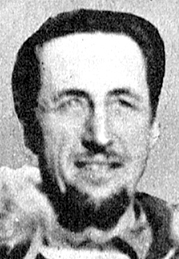 ORLANDO RIGONI, author of “I Want to Know Why” in this issue, appears at the left in a photograph taken in the Yukon last winter while he was working on the Alcan Highway, which, as you doubtless know, is the new road through Canada connecting the United States and Alaska. He is a writer by trade and was working on the road to get material for a novel for young people.
ORLANDO RIGONI, author of “I Want to Know Why” in this issue, appears at the left in a photograph taken in the Yukon last winter while he was working on the Alcan Highway, which, as you doubtless know, is the new road through Canada connecting the United States and Alaska. He is a writer by trade and was working on the road to get material for a novel for young people.